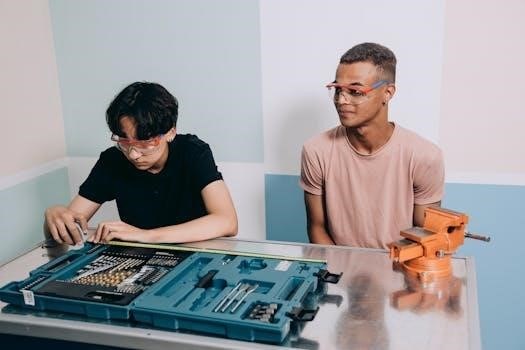hayward pool pump instruction manual
Hayward pool pumps are engineered for the demanding needs of modern pools and spas. They ensure efficient water circulation, filtration and overall system performance. Understanding their features is crucial for optimal pool maintenance. Hayward offers diverse pump models to meet varied pool sizes and requirements.
Hayward pool pumps are essential for maintaining clean and healthy swimming pools. Engineered to meet the rigorous demands of both residential and commercial pools, Hayward pumps ensure efficient water circulation and filtration. Proper circulation is vital for distributing chemicals evenly, preventing algae growth, and keeping the water clear. Hayward offers a diverse range of pumps, each designed to cater to specific pool sizes, features, and performance requirements.
From the energy-efficient variable-speed pumps to the robust single-speed models, understanding the features and capabilities of your Hayward pump is crucial for optimal pool maintenance. Selecting the right pump can significantly impact energy consumption, filtration effectiveness, and the overall lifespan of your pool system. Hayward pumps come with innovative technologies aimed at providing superior performance and reliability.
This section will introduce you to the different types of Hayward pool pumps, highlighting their key features and benefits. Whether you own a small above-ground pool or a large in-ground pool with spa features, Hayward has a pump solution tailored to your needs. Familiarizing yourself with these options will help you make informed decisions regarding your pool’s water circulation system.
Importance of the Instruction Manual
The instruction manual for your Hayward pool pump is an indispensable resource that provides critical information for the safe and effective operation and maintenance of your equipment. Neglecting to consult the manual can lead to improper installation, operational errors, and potential safety hazards. The manual contains step-by-step instructions for setting up your pump, ensuring that it is correctly installed and connected to your pool’s plumbing system.
Detailed guidance on priming the pump, a crucial step for ensuring proper water flow and preventing damage to the pump motor, is also included. Regular maintenance procedures, such as cleaning the pump basket and inspecting for leaks, are outlined in the manual, helping you prolong the lifespan of your pump and maintain its efficiency.
Troubleshooting tips for common issues, such as pump cavitation or motor overheating, are provided, enabling you to diagnose and resolve problems quickly and effectively. Safety precautions and warnings are clearly stated to prevent accidents and injuries during operation and maintenance. By following the instructions in the manual, you can ensure that your Hayward pool pump operates safely and efficiently, providing you with years of reliable service and a clean, enjoyable swimming pool.
Hayward Pump Models and Manual Availability

Hayward offers a diverse range of pool pump models, each designed to cater to specific pool sizes, features, and performance requirements. Understanding the different models and their corresponding instruction manuals is crucial for proper installation, operation, and maintenance. Among the popular Hayward pump models are the Super Pump series, known for their reliability and energy efficiency. The TriStar pump is engineered for demanding in-ground pools and spas, while the Power-Flo series is designed for above-ground pools. Variable speed pumps, such as the EcoStar and Super Pump VS, offer enhanced energy savings and customizable performance settings.
Instruction manuals for Hayward pool pumps are readily available online through the Hayward Pool Products website. These manuals provide detailed information on the specific features, installation procedures, operating instructions, maintenance guidelines, and troubleshooting tips for each pump model. Accessing the correct manual for your specific Hayward pump model is essential for ensuring safe and efficient operation and prolonging the lifespan of your equipment. It is recommended to download and save a copy of the manual for future reference.
Safety Precautions and Warnings
Prioritizing safety is paramount when installing, operating, and maintaining a Hayward pool pump. The instruction manual contains critical safety precautions and warnings that must be carefully reviewed and followed to prevent potential hazards and injuries. Before commencing any work on the pump, always disconnect the power supply to avoid electrical shock. Ensure that the pump is properly grounded in accordance with local electrical codes.
Never operate the pump if it is damaged or malfunctioning. Do not allow children to operate or tamper with the pump. Keep the area around the pump clear of obstructions and flammable materials. When handling chemicals, wear appropriate protective gear, such as gloves and eye protection. Avoid splashing chemicals on the pump or electrical components. Regularly inspect the pump and its components for signs of wear or damage. Replace any worn or damaged parts immediately. If you encounter any unusual noises, vibrations, or leaks, immediately shut off the pump and consult a qualified technician. Always adhere to the safety guidelines outlined in the instruction manual to ensure a safe and enjoyable pool experience.
Installation Instructions
Proper installation is crucial for the optimal performance and longevity of your Hayward pool pump. The instruction manual provides detailed, step-by-step installation instructions that must be followed precisely. Before commencing installation, carefully read the entire manual and familiarize yourself with all components and tools required. Select a suitable location for the pump that is level, well-ventilated, and protected from the elements. Ensure that the location is easily accessible for maintenance and repairs.
Mount the pump securely to a solid foundation, such as a concrete pad or equipment platform. Connect the plumbing according to the diagrams provided in the manual. Use appropriate fittings and sealant to ensure watertight connections. Properly size the plumbing to match the pump’s inlet and outlet ports. Wire the pump to the electrical supply in accordance with local electrical codes. Use the correct gauge wire and a dedicated circuit breaker. Ground the pump properly to prevent electrical shock. After completing the installation, double-check all connections and ensure that the pump is securely mounted and properly aligned. Prime the pump according to the instructions in the manual before starting it for the first time. Always consult a qualified technician if you have any questions or concerns during the installation process.
Priming the Pump
Priming your Hayward pool pump is a critical step to ensure proper operation and prevent damage. Priming involves removing air from the pump and impeller housing, allowing water to flow freely. Before priming, ensure the pump is properly installed and all connections are tight. Turn off the power to the pump before beginning the priming process to avoid electrical hazards. Open the pump’s hair and lint trap lid and inspect the basket for debris. Clean the basket if necessary and ensure it is properly seated.
Fill the pump housing with water until it is full. This can be done using a garden hose or bucket. Replace the hair and lint trap lid, ensuring it is securely tightened. Open the air relief valve on top of the filter to allow air to escape. Turn on the pump and observe the water flow. If the pump does not prime within a few minutes, turn it off and repeat the priming process. You may need to repeat this process several times to remove all the air from the system. Once the pump is primed and water is flowing steadily, close the air relief valve. Monitor the pump for any unusual noises or vibrations and address any issues promptly. Always consult the instruction manual for specific priming instructions for your Hayward pump model.
Operating Instructions
Operating your Hayward pool pump efficiently requires understanding its controls and features. Familiarize yourself with the pump’s on/off switch, speed settings, and any other control options. Before starting the pump, ensure that the pool water level is adequate and all valves are properly positioned for normal operation. Turn on the pump and monitor the water flow to verify that it is circulating correctly. Observe the pressure gauge on the filter to ensure it is within the recommended range.
Adjust the pump speed as needed to achieve optimal filtration and water circulation. Lower speeds can save energy, while higher speeds may be necessary for certain tasks like vacuuming or backwashing. Regularly check the pump and filter for any leaks or unusual noises during operation. If you notice any issues, turn off the pump and address the problem promptly. Clean the pump’s hair and lint trap basket regularly to maintain efficient water flow. Avoid running the pump dry, as this can cause damage to the motor and seals. Use a timer to automate the pump’s operation and ensure it runs for the appropriate amount of time each day. Always consult the instruction manual for specific operating instructions and recommendations for your Hayward pump model.
Regular Maintenance Procedures
Regular maintenance is crucial to prolong the life and efficiency of your Hayward pool pump. Start by visually inspecting the pump for any signs of leaks, cracks, or damage. Clean the pump’s strainer basket regularly to remove debris and ensure proper water flow. Check the motor for any unusual noises or vibrations, and address any issues promptly. Lubricate the motor bearings as needed, following the manufacturer’s recommendations. Inspect the pump’s seals and O-rings for wear or damage, and replace them if necessary.
Periodically check the electrical connections to ensure they are tight and corrosion-free. Clean the pump’s exterior to prevent dirt and grime buildup. Monitor the pump’s performance, including flow rate and pressure, to identify any potential problems early on. Backwash the filter regularly to remove accumulated debris and maintain optimal filtration. Consider having a professional inspect your pump annually to ensure it is in good working condition. Keep a log of maintenance activities to track the pump’s performance and identify any recurring issues. Store the pump properly during the off-season to protect it from damage; By following these regular maintenance procedures, you can extend the life of your Hayward pool pump and ensure it operates efficiently.
Troubleshooting Common Issues

Addressing common issues promptly can prevent further damage to your Hayward pool pump. If the pump is not priming, check for air leaks in the suction lines and ensure the strainer basket is clean. If the pump is making unusual noises, inspect the impeller for obstructions or damage, and lubricate the motor bearings. If the pump is leaking, replace the seals or O-rings. If the pump is overheating, check for proper ventilation and ensure the motor is not overloaded.
If the pump is not pumping water, check for clogs in the suction or discharge lines. If the pump is cycling on and off, check the water level in the pool and ensure the skimmer is not blocked. If the pump is losing pressure, backwash the filter and check for leaks in the plumbing. If the pump is tripping the circuit breaker, check for electrical issues and consult a qualified electrician. If the pump is running but not circulating water, check the impeller for damage and ensure the motor is running at the correct speed; Refer to the troubleshooting section of the instruction manual for specific solutions to common problems. If you cannot resolve the issue yourself, contact a qualified pool service technician for assistance.
Winterization Procedures
Proper winterization is crucial for protecting your Hayward pool pump from freezing temperatures and potential damage; Before winterizing, disconnect the pump from the power supply and drain all water from the pump housing, impeller, and volute. Remove all drain plugs and store them in a safe place to prevent loss. Clean the strainer basket and inspect it for cracks or damage. If necessary, replace the strainer basket before storing the pump. Disconnect all plumbing connections to the pump, including suction and discharge lines.
Store the pump in a dry, protected area, such as a garage or shed, to prevent exposure to freezing temperatures. Cover the pump with a tarp or plastic sheeting to protect it from dust and debris. If the pump is stored outdoors, elevate it off the ground to prevent moisture damage. Apply a lubricant to the motor bearings to prevent corrosion during storage. Inspect the pump for any signs of damage or wear and tear. Replace any worn or damaged parts before storing the pump. Refer to the winterization section of the instruction manual for specific instructions and recommendations. Following these procedures will ensure that your Hayward pool pump is protected during the winter months and ready for use when the swimming season begins again.
Parts List and Diagrams

The parts list and diagrams section of the Hayward pool pump instruction manual is a vital resource for identifying and ordering replacement parts. This section typically includes a detailed breakdown of all the pump components, along with corresponding part numbers and descriptions. Diagrams provide a visual representation of how the parts fit together, aiding in disassembly and reassembly. Common parts listed include the motor, impeller, diffuser, volute, strainer basket, lid, O-rings, seals, and drain plugs.
The parts list often includes exploded views of the pump assembly, showcasing the arrangement of individual components. These diagrams are particularly helpful when troubleshooting issues or performing repairs. When ordering replacement parts, it’s crucial to refer to the correct part number listed in the manual to ensure compatibility. Hayward offers genuine replacement parts designed specifically for their pool pumps, guaranteeing optimal performance and longevity. Using non-genuine parts may void the warranty and compromise the pump’s efficiency. The parts list and diagrams section can also assist in identifying the specific model of your Hayward pool pump, which is essential when seeking technical support or ordering parts online. By carefully reviewing this section, users can effectively maintain and repair their Hayward pool pumps, extending their lifespan and ensuring reliable operation.

Hayward Pool Pump Instruction Manual⁚ Article Plan
Warranty Information and Support
The warranty information and support section of the Hayward pool pump instruction manual outlines the terms and conditions of the manufacturer’s warranty, providing details on coverage, duration, and limitations. Typically, the warranty covers defects in materials and workmanship under normal use, excluding issues arising from improper installation, maintenance, or external factors like freezing or power surges. It specifies the process for submitting a warranty claim, including required documentation such as proof of purchase and a detailed description of the problem.
This section also provides contact information for Hayward’s customer support, including phone numbers, email addresses, and website links. Customers can reach out for technical assistance, troubleshooting guidance, and warranty-related inquiries. The manual may include a list of authorized service centers where qualified technicians can perform repairs covered under warranty. Additionally, it might offer access to online resources like FAQs, troubleshooting guides, and instructional videos to help users resolve common issues independently. Hayward’s support resources aim to ensure customer satisfaction and provide timely assistance with any pump-related concerns. Understanding the warranty terms and available support channels is crucial for protecting your investment and ensuring the long-term performance of your Hayward pool pump. Always retain your purchase receipt and manual for future reference.
